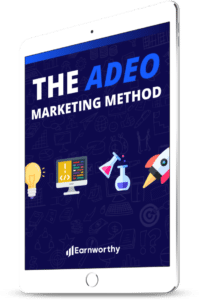If you’re just starting out with inbound marketing, the amount of effort you have to put into your campaigns can seem overwhelming. Buyer personas, sales funnels, lead magnets, oh my! Where do you begin?!
Well, it doesn’t always have to be that way. Getting started with inbound marketing can be as easy as starting a new gym routine.
Keep reading and I’ll share with you seven specific steps you’ll need to take to get your inbound marketing efforts in shape.
Ready? Let’s go!
1. Set realistic goals
If you’re going to the gym, it’s a smart idea to have goals. Do you want to lose weight, gain muscle, tone up, or what? Similarly, with inbound marketing, you need to know what you’re looking to get out of your campaigns.
Your goals should be SMART. In other words, they should be specific, measurable, attainable, realistic, and timely.
Do you want more leads or more sales? Would you be satisfied with more social shares and higher brand awareness for your product or service? Whatever the case may be, having the right set of goals is the essential starting point to a powerful inbound marketing campaign.
2. Remember to warm up first
Now, once you have your goals, don’t just jump in head first. You need to make sure you have all of your bases covered before opening the flood gates. For instance, if you’re going to be sending traffic to a landing page, make sure you have installed retargeting scripts if retargeting is part of your strategy.
And if you’re launching a new website, be sure to conduct usability testing before going live. You never know what you’ll find with a solid usability test.
The bottom line is, you need to have all of the technical, sales, and support systems in place from the start. Is your sales team ready to work with inbound-generated leads? Make sure they are before you hit that launch button!
3. Make it a habit
Many folks believe that in order to form a habit, you need to do something for a minimum of 21 days. While the actual number of days is debated, it remains true that forming habits takes time.
But once you get in the habit of doing something, you’re much more likely to stick with it for the long-term.
As far as inbound marketing is concerned, you’re going to need to take that long-term approach in order to succeed. This isn’t a “quick fix” approach to marketing.
So, set down daily reminders to check on your campaigns, create fresh content, and analyze what’s working. Rinse and repeat until you don’t even have to remind yourself anymore.
4. Change things up occasionally
On the other hand, don’t let a habit become an excuse for getting stuck in your ways. Inbound marketing is a relatively young field. There is still a ton of stuff to figure out. All of the inbound “experts” of today will need to keep learning if they want to stay on top in the months and years ahead.
Continue to learn new tactics and strategies, and constantly be on the lookout for new tools and technology. Read the top industry blogs, listen to the popular marketing podcasts, and above all else, ask lots of questions!
I’ve seen marketing campaigns fail because they weren’t able to keep up with the times. Don’t become another statistic. Stay ahead of the curve by switching things up like a mad scientist, who’s always looking for something else to test.
5. Start with the right fuel
Fitness enthusiasts understand just how important proper nutrition is. You can work out like crazy and still never hit your goals if you have a terrible diet.
In the same way, you can be using the latest and greatest inbound marketing tools and tactics, but if your core content is mediocre, you’re not going to succeed.
So, regardless of whatever it is that you’re marketing, you need to understand it like the back of your hand. Become an expert in your field, or work with experts who can produce the quality of content your audience expects and deserves.
Your content–whether it be written blog posts, videos, podcasts, or anything else–is your fuel. Your entire inbound strategy lives off of it, so make it count.
6. Find the right partners
Lots of folks prefer to go to the gym with a workout buddy. And lots of great inbound marketers prefer to work with marketing partners to increase the effectiveness of their campaigns.
Guest bloggers, podcasters, and forum moderators all make great marketing partners. The idea is to find someone who already has access to an audience that you’d like to connect with, and then find out how the two of you can work together, either as a one-time project or an ongoing partnership.
7. Track your progress
Last but not least, you need to track everything you’re doing from the very beginning. As I mentioned above, when setting goals, you should make sure they’re measurable.
As the saying goes, you cannot improve what you cannot measure. So be sure to have your analytics systems in place (such as Google Analytics), and know what to look for. That way, you can see what’s working, and do more of that.
Ready, set, go!
Hopefully, these guidelines will help give some direction to your inbound marketing efforts. It’s all about creating the right system and making it work for you and your audience.
Don’t get discouraged if you don’t see results right away. Just like working out, this stuff takes time. But if you put in the effort, it will pay off in the end.





